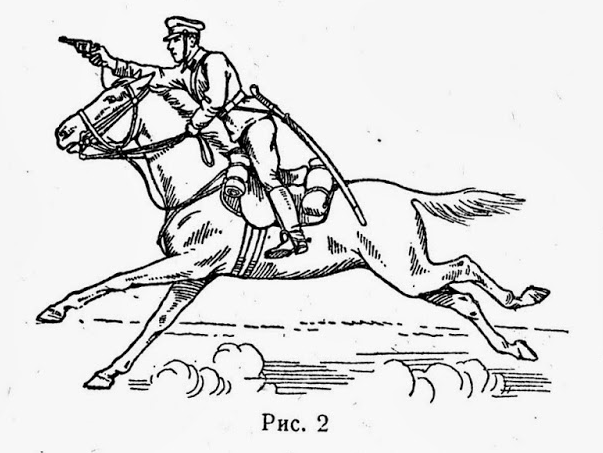EnsignExpendable of the excellent Soviet Gun Archives blog translated a Soviet manual on shooting handguns and rifles from horseback, back in March of this year. I’m sure TFB readers will find it interesting! An excerpt:
“Peculiarities of firing from horseback
If firing a rifle from horseback is done mainly during patrols and other cases when there is no time to dismount, firing a revolver or pistol is often done by a cavalryman.
In battle, commanding fire from horseback is either very difficult or downright impossible. The soldier must rapidly and independently determine how to act, with a blade or revolver, and if the latter, fire, select targets, find an aiming points, etc. Actions of a cavalryman are further complicated by allied cavalry mixing with enemy cavalry. The cavalryman must fire in a way that does not injure his allies.
These peculiarities must be considered when teaching soldiers to handle their weapons. A soldier’s ability to fight independently or in a group, display creativity and initiative, and knowledge of ballistics of his weapons are fundamentals of his training.
The issue of shooting from horseback was first explored in the Manual for Shooting from Horseback, published in 1935. That manual demands that every cavalryman must master techniques of firing from horseback with a rifle, pistol, or revolver.
In this work, we make it our objective to share with the writer the practical and theoretical conclusions we have reached as a result of trials.
Trials show that the most effective rifle fire is at a target 100-150 meters away from the rider. Individual riders may effectively engage targets at larger distances. Fire from a revolver is effective at 50 meters when stopped and 35 meters on the move. A group of shooters may engage a target 75 meters away when stationary and 50 meters away on the move.
Precision of firing from horseback is affected by many factors that firing from the ground is not. It is dependent on, for example, the behaviour of the horse. The horse often impedes its rider’s ability to shoot precisely, which is why every cavalryman must dedicate much attention to the training of his horse.”
Back in 1936, cavalry was still very much a part of armies worldwide. It was only by the middle of World War II that that cavalry was shown the door, in favor of mechanized vehicles. Even so, today, armored groups in the United States are still referred to as “cavalry”, a hold-over from a bygone era.
 Your Privacy Choices
Your Privacy Choices
